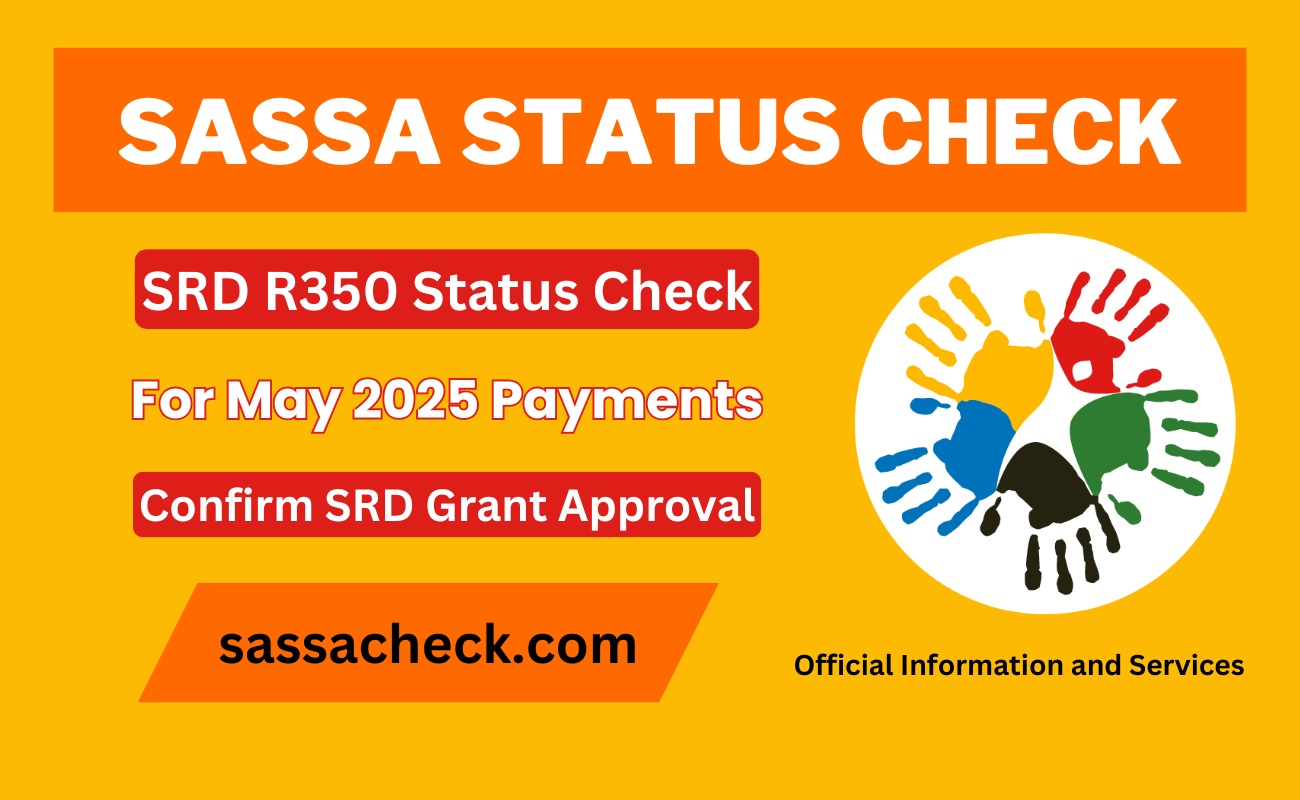Introduction
In 2025, millions of South Africans continue to rely on the SASSA SRD (Social Relief of Distress) grant for basic financial support. However, a common and often confusing status many applicants encounter is “Pending.” If you’ve checked your SRD grant application and found this term, it can leave you uncertain and frustrated.
But what does “Pending” really mean? Does it mean rejection, delay, or approval in progress? This comprehensive guide will decode the true meaning behind a pending SASSA SRD status in 2025, walk you through the common causes, explain what you can do while waiting, and show you how to follow up or appeal if needed.
With the right understanding and proactive steps, you can take control of your application and make informed decisions about your grant. Let’s explore everything you need to know to move forward with confidence and clarity.
1. What Does “Pending” Status Mean?
The word “Pending” in your SASSA SRD grant status simply means that your application is still under review. This is a normal part of the process and doesn’t automatically indicate that your application will be rejected.
Pending status appears when SASSA is still verifying key details, including:
- Your South African citizenship or residency
- Your income and employment status
- Your banking information
- Whether you’re receiving other social grants or UIF
Think of it as your application sitting in a queue, waiting to be processed. With the high volume of applicants every month, especially during financial crises or unemployment spikes, this status is common.
2. Why Is My SRD Status Still Pending?
Several reasons can cause your status to remain in the “Pending” phase longer than expected:
A. High Volume of Applications
SASSA receives millions of applications each month. The more people apply, the longer it can take to process and verify each one.
B. Manual Verification Delays
While some parts of the system are automated, SASSA still performs manual checks—especially if there are mismatched or unclear details. This may involve comparing your information with databases like SARS, UIF, or Home Affairs.
C. Mismatched or Incomplete Information
Incorrect ID numbers, phone numbers, or bank account details can delay your application. Any discrepancy, such as a typo in your surname or a mismatch in bank account ownership, can keep your status stuck.
D. Technical Issues
System glitches or slow updates can cause delays, especially during peak times. If your application was submitted close to the closing date, it may take longer to appear on the system or update.
3. How Long Does a Pending Status Last in 2025?
Typically, the “Pending” status lasts between 30 to 90 days. However, this can vary based on factors like:
- How accurately you submitted your details
- The current workload at SASSA
- Whether any verification steps require manual intervention
Some people receive updates within a few weeks, while others may wait over three months. If it has been longer than 90 days, it’s important to take action and follow up.
4. How to Check Your SASSA SRD Status in 2025
There are several ways to monitor the progress of your SRD grant:
Online Portal
- Visit the official SRD website.
- Enter your South African ID number and registered cellphone number.
- Submit and view your application status.
- Save the SASSA WhatsApp number.
- Send a message with the keyword “Status.”
- Follow the prompts to check your application.
SMS
- Send an SMS with your ID number to the dedicated SASSA number.
- Wait for a reply with your status update.
SASSA Call Centre
- Call the toll-free number.
- Provide your ID and other verification details.
- An agent can assist with updates and clarification.
5. What Should You Do if Your SRD Grant is Still Pending?
Here’s what you can do to ensure your application gets processed:
A. Double-Check Your Personal Information
Ensure that your:
- ID number is correct
- Mobile number is active
- Bank details are accurate and match your ID
Incorrect or missing details can hold up the approval process.
B. Wait Patiently (Up to 90 Days)
If your details are all correct, give the system time. SASSA advises applicants to wait at least three months before escalating concerns.
C. Keep Checking Your Status Weekly
Monitoring your status regularly ensures you’re aware of any changes, including a shift to “Approved,” “Declined,” or “Bank Details Pending.”
D. Contact SASSA If It’s Over 90 Days
If nothing changes after three months, contact SASSA directly through the helpline, WhatsApp, or by visiting your nearest office. They can investigate your application and resolve any issues.
6. What Does “Bank Details Pending” Mean?
This status is different from “Pending” and means that your application is approved, but your banking information is missing or incorrect. You must submit or update your bank details for payment to be made.
To fix it:
- Log in to the SRD portal
- Select “Update Banking Details”
- Choose a bank and submit the correct account information
Make sure the bank account is in your name—third-party accounts will not be accepted.
7. What If Your Status Changes to Declined?
If your status changes from “Pending” to “Declined,” it means that SASSA has found that you do not meet one or more of the eligibility requirements.
Reasons for a declined status may include:
- Receiving UIF or NSFAS
- Earning more than the income threshold
- Inaccurate or false information
8. How to Appeal a Declined SRD Grant
You can appeal a declined status within 30 days of receiving it:
- Go to the SRD website
- Click on “Appeal” or “Lodge Appeal”
- Submit your ID number and mobile number
- Provide a valid reason for your appeal
- Wait for feedback from the appeal tribunal
Make sure your details are updated and honest. Appeals can take several weeks to process.
9. How to Avoid Future Delays
To prevent being stuck in the pending stage again:
- Apply early in the cycle
- Use your own active cellphone number
- Submit correct banking details
- Avoid submitting duplicate applications
- Regularly update your contact and personal information
Being proactive and precise can save you time and avoid unnecessary stress.
10. What Does “Referred” Mean vs. “Pending”?
Many applicants confuse “Referred” with “Pending.” Here’s the difference:
- Pending = Application is being reviewed.
- Referred = Your application has been flagged, often for suspected fraud or duplicate entries.
A “Referred” status requires you to contact SASSA for clarification and next steps.
Flexible Storage Solutions for Rapid Business Growth
Conclusion
In 2025, the SASSA SRD grant remains a vital source of financial support for many, and encountering a “Pending” status doesn’t have to be a roadblock. By understanding what it means, why it happens, and how long it typically lasts, you can stay informed and take the right steps toward resolution.
Always ensure your personal and banking details are correct, check your status regularly, and don’t hesitate to contact SASSA if the pending period stretches beyond three months. If your application is declined, act quickly to submit an appeal and ensure your voice is heard.
Patience, attention to detail, and consistent follow-up are the keys to unlocking your grant approval. With this guide, you now have the tools to navigate the process confidently and get the support you deserve.
FAQs
1. What does “Pending” mean on my SASSA SRD status?
“Pending” means your application is still being processed. SASSA is reviewing your information and hasn’t yet approved or declined your request.
2. How long does it take for a SASSA status to change from pending?
It can take anywhere from 30 to 90 days, depending on the accuracy of your details and the number of applicants being processed.
3. What should I do if my SRD status is pending for over 3 months?
If your status hasn’t changed in over 90 days, contact SASSA directly to request an update or correct any possible issues.
4. Can I update my details while my status is pending?
Yes. You can update your bank details, contact information, or reapply through the SRD portal if your application hasn’t been finalized.
5. Can I still appeal if my pending status changes to declined?
Yes. If your status turns to “Declined,” you have 30 days to appeal the decision through the SRD website with proper supporting reasons.







